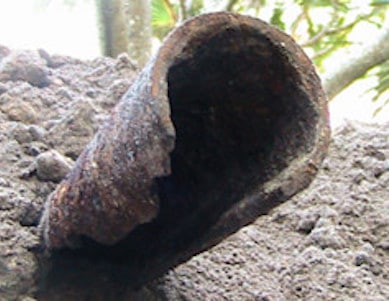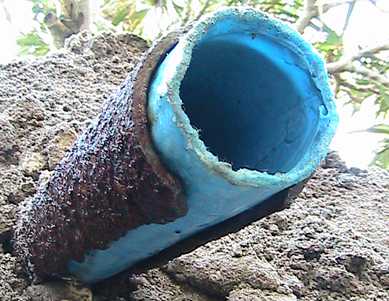Things to know about sewer line bellies
When it comes to the various components in a home plumbing system, few play as central a role as your main sewer line. The sewer line acts as a conduct from your home to your city’s sewer main, usually located beneath the road in front of a house. Waste water flows out of your home through the sewer pipe en route to the municipal waste treatment plant.
If anything should go wrong with your sewer line, your entire home’s plumbing system may be affected. One of the most frequent issues affecting sewer lines comes in the form of sewer line bellies. If you would like to improve your knowledge of this common problem, keep reading. This article outlines four things to know about sewer line bellies.
Sewer line bellies impede the flow of waste
A residential plumbing system contains no pumps or other mechanical parts responsible for pushing waste to the city sewer main. Instead, gravity alone ensures the proper flow of waste out of your home. In order to facilitate flow, the sewer pipe leads out of your home at a sloping angle. Ideally, the sewer line should have an angle of ¼ inchfor every foot of pipe.
A sewer line belly involves part of the sewer line sagging downward, taking on a curved shape which impedes the natural flow of waste. Not only does the waste water no longer have the benefit of flowing downhill all the way to the sewer main, but it also has to move upward along the second half of the curve.
In some cases, the pressure of the water flowing out of your home may provide sufficient force to push past a sewer line belly. Yet over time, debris tends to build up along the base of the belly. This build-up makes it harder for waste to move through the sewer line. Eventually you may begin experiencing sewage backups inside of your home.

Sewer line bellies usually have natural causes
Most home sewer lines start off with a correct angle. Yet as the years go by, those pipes often develop bellies as the result of shifting soil. As dirt compacts beneath the sewer line, it will sag downward into any void spaces that form. A variety of natural causes can lead to sewer bellies, including tree root growth, excessive soil hydration, earthquakes, and even normal seasonal temperature fluctuations.
Proper installation techniques prevent sewer bellies
While the factors that lead to sewer bellies tend occur naturally, well-installed sewer lines can often resist such forces. To begin with, contractors should thoroughly compact the soil before installing the sewer line. Compaction minimizes the likelihood of soil-density changes leaving the pipe under-supported.
An equally important tactic involves installing a bedding material in the trench before placing the pipe. Sand makes the best choice for a bedding material, although gravel can also be effective. Unlike soil, sand will not compact over time. As a result, the base of the sewer pipe should maintain a decent level of support.
Many sewer belly diagnoses are incorrect
Contractors often use video inspection technology to diagnose sewer bellies. Unfortunately, less experienced plumbers often misinterpret what they see. Noticing a dip in the water level at a certain place in the pipe, they assume they have found a sewer belly. Instead, your pipe may suffer from the problem known as channeling.
Channeling happens when the bottom of a sewer line erodes, leading to low spots. In extreme cases, the bottom of the pipe may even disappear entirely. The issue here has nothing to do with slope, and everything to do with corrosion and wear. Repairing channeling, therefore, requires a much different repair procedure than repairing a sewer belly.
Sewer Line Belly vs. Channeling – Why the confusion?
The issue lies with the company performing the video inspection. At first glance, both conditions may have the same symptom – the camera going underwater during a sewer video inspection. However, only after thorough investigation with a jetter can the problem be properly diagnosed.
In conclusion, a belly in a sewer line and channeling are easily confused. We have found that when our customers mention they have a belly in their sewer line, 99% of the time the line is channeled instead. Since a sewer line belly is accompanied by an issue with the pipe’s slope, conventional replacement is the only repair option. However, channeling differs in that the pipe’s slope (in most cases) remains functional. This means that channeling may be repaired by trenchless pipelining, saving you time, money, headaches and the mess associated with conventional replacement.

How Can a Sag in a Gravity Sewer Line Be Fixed?
Many homeowners do not realize the intricate piping that moves sewage waste from their structure to a municipal sewage pipeline. Most sewer lines use gravity as a method of moving waste water and solids down a pipe. However, sewer lines can develop problems, such as sagging. Sagging is repairable, although it can be costly based on the repair method chosen.
Sewer Line Design
Sewer lines use positive slopes to take advantage of gravity’s force pulling waste water and solids away from a building. Typically, a sewer pipe is installed at an angle that ensures a 1/4-inch fall for each foot of piping length. In fact, the slope can be as small as 1/8 inch, if the installation is limited in space, although this is not a preferable spacing.
Sewer Line Sag Identification
A sewer line sag is also known as a belly. This sag generates a negative slope along the pipe’s length, creating a pooling area for water and waste. Typically, sags are caused by improper soil compaction, as well as soil shifting. The pipe becomes unstable, slowly sagging with the soil’s movement.

Dig and Replace
The old-fashioned method of repairing a sag is digging and replacing. A contractor digs down into the soil until he reaches the sag. The contractor replaces the section and fills the trench. On average, a dig-and-replace process can cost about $50 to $60 for each foot. However, many factors can increase the price, including the piping’s depth and moving above ground structures.
Trenchless Technology
Newer piping replacement methods have been devised over the years, including trenchless techniques, costing about $40 to $80 per piping foot. In-line expansion is a trenchless method that uses the older pipe to guide a new pipe into place. An expansion head pushes the old pipe forward while pulling the new pipe in from behind, negating the need to dig. Soil is compacted as the expansion head moves forward, creating a solid area for the new pipe to remain at a positive slope. Another method is sliplining. This technique slips a smaller pipe within the old pipe. After the new pipe is positioned, the old pipe slides away and is discarded.
The typical causes of belly in sewer line systems
There are several reasons why bellies occur in sewer lines. One of the most obvious is poor planning. When your house was first built, the original plumbing company may not have bedded the line properly. The plumbing company should have used crushed stone or sand underneath the pipe to protect it from settling. Without proper bedding, your pipes can sag and bellies can form. In many municipalities a crushed stone bed is required by plumbing code.
A failure to follow plumbing plans can cause a belly in sewer lines
Another reason a belly in a sewer line system can occur is if the original plumber failed to check the finished grade, or to follow sewer pipe plans. Grade is important to your sewer lines, because lines need to slope downwards in order to use gravity. If the slope is not great enough, the pipe cannot properly remove waste from the home. Planning is an important part of successful plumbing design and installation. When unprofessional plumbers fail to follow plans, problems like this arise. Line levels, torpedo levels, or laser levels, are some of the tools used to prevent this problem during drain pipe installation.